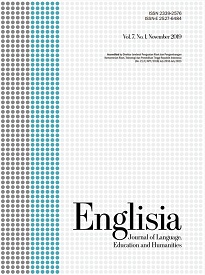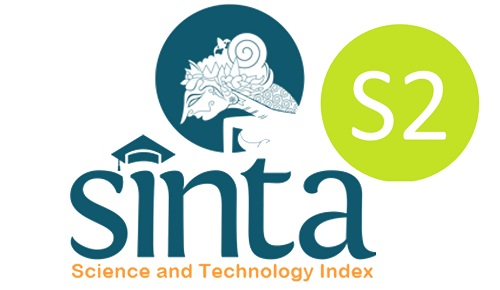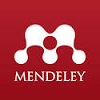Exploring nominalization and lexical density deployed within research article abstracts: A grammatical metaphor analysis
DOI:
https://doi.org/10.22373/ej.v11i2.20390Keywords:
Abstracts, Ideational grammatical metaphor, Lexical density, NominalizationAbstract
In research articles published for international reputable journals, the crucial role of abstracts to attract readers, especially reviewers or editors, is not in doubt. The article is expected to not experience direct desk rejection due to non-impressive and persuasive lexical choices in the abstract for further reading. This paper proposes a corpus study to scrutinize ideational grammatical metaphor (IGM) from the abstracts of successfully published articles in four applied linguistic quality indexed Scopus journals (Q1 and Q2) managed by Asian countries. The data were analyzed based on Halliday’s SFL framework focused on the realization of IGM in nominalization and lexical density. The pattern of IGM examined was on the transference of process and quality nominalization through morphological derivations. The findings show that the shift from process to thing dominates the other with many variations of suffixes within the words. In addition, the abstracts’ lexical density results ranged from 45 to 72 percent. Thus, it is suggested that English teachers consider raising students’ awareness of nominalization to produce lexically dense but informative texts in their academic writing classes.
Downloads
References
Afifi, N. (2021). Exploring the use of grammatical metaphor in Indonesian EFL learners’ academic writing. Indonesian Journal of Applied Linguistics, 10(3).
Basthomi, Y. (2006). The rhetoric of article abstracts: A sweep through the literature and a preliminary study. Journal of Bahasa dan Seni, 34(2), 174-189.
Crossley, S. (2020). Linguistic features in writing quality and development: An overview. Journal of Writing Research, 11(3).
Derewianka, B. (2003). Grammatical metaphor in the transition to adolescence. In Grammatical Metaphor (pp. 185-219). John Benjamins.
Dickerson, M. (2018). A gentle introduction to text analysis with Voyant tools. eScholarship, University of California.
Devrim, D. Y. (2015). Teaching grammatical metaphor: Designing pedagogical interventions. Cambridge Scholars Publishing.
Ezeifeka, C. R. (2015). Grammatical metaphor: In search of proficiency in research abstract writing. SAGE Open, 5(1), 2158244015577667.
Gregori-Signes, C., & Clavel-Arroitia, B. (2015). Analyzing lexical density and lexical diversity in university students’ written discourse. Procedia-Social and Behavioral Sciences, 198, 546-556.
Gustilo, L., Comillo, M. I., Valle, A., & Comillo, R. I. (2021). Managing readers' impressions of research article abstracts through metadiscourse. Indonesian Journal of Applied Linguistics, 11(2), 392-406.
Halliday, M. A. K., Matthiessen, C. M., Halliday, M., & Matthiessen, C. (1999). Construing experience through meaning: A language-based approach to cognition. Continuum.
Halliday, M. A. K., Matthiessen, C. M., Halliday, M., & Matthiessen, C. (2004). An introduction to functional grammar. Routledge.
Halliday, M. A. K., Matthiessen, C. M., Halliday, M., & Matthiessen, C. (2014). An introduction to functional grammar. Routledge.
Hao, J. (2015). Construing biology: An ideational perspective. [Unpublished Doctoral dissertation]. The University of Sydney, Sydney.
Holtz, M. (2011). Lexico-grammatical properties of abstracts and research articles. A corpus-based study of scientific discourse from multiple disciplines [Unpublished Doctoral dissertation]. Technische Universität, Darmstadt.
Hyland, K., & Tse, P. (2005). Hooking the reader: A corpus study of evaluative that in abstracts. English for specific purposes, 24(2), 123-139.
Lei, S., & Yang, R. (2020). Lexical richness in research articles: Corpus-based comparative study among advanced Chinese learners of English, English native beginner students and experts. Journal of English for Academic Purposes, 47, 100894.
Kalantari, R., & Gholami, J. (2017). Lexical complexity development from dynamic systems theory perspective: Lexical density, diversity, and sophistication. International Journal of Instruction, 10(4), 1-18.
Kazemian, B., Behnam, B., & Ghafoori, N. (2013). Ideational grammatical metaphor in scientific texts: A Hallidayan perspective. International journal of Linguistics.
Mahfudurido, I. (2021). Exploring nominalization use in graduate thesis abstracts: An SFL approach to academic writing. LEKSEMA: Jurnal Bahasa dan Sastra, 6(2).
Nasseri, M., & Thompson, P. (2021). Lexical density and diversity in dissertation abstracts: Revisiting English L1 vs. L2 text differences. Assessing Writing, 47, 100511.
Nguyen, T. H. T., & Edwards, E. C. (2015). An Investigation of nominalization and lexical density in undergraduate research proposals. Language Education in Asia, 6(1), 17-30.
Martin, J. R. (2020). Metaphors we feel by: stratal tension. Journal of World Languages, 6(1-2), 8-26.
Ryshina-Pankova, M. (2015). A meaning-based approach to the study of complexity in L2 writing: The case of grammatical metaphor. Journal of Second Language Writing, 29, 51-63.
Romero, E., & Soria, B. (2005). The notion of grammatical metaphor in Halliday: Towards an understanding of the English language: past, present and future. Studies in honour of Fernando Serrano, 143-158.
Taverniers, M (2017). Grammatical metaphor. In Tom Bartlett & Gerard O’Grady (Eds.). The Routledge handbook of systemic functional linguistics. Routledge: London
Thida, D (2019). Lexical density and readability of students’ writing. International Journal of Science and Research (IJSR), 9 (8), 893-895
To, V., Fan, S., & Thomas, D. (2013). Lexical density and readability: A case study of English textbooks. Internet Journal of Language, Culture and Society, (37), 61-71.
Downloads
Published
Issue
Section
License
Proposed Policy for Journals That Offer Open Access
Authors who publish with Englisia journal agree to the following terms:
- Authors retain copyright and grant the journal right of first publication with the work simultaneously licensed under a Creative Commons Attribution License that allows others to share the work with an acknowledgement of the work's authorship and initial publication in this journal.
- Authors are able to enter into separate, additional contractual arrangements for the non-exclusive distribution of the journal's published version of the work (e.g., post it to an institutional repository or publish it in a book), with an acknowledgement of its initial publication in this journal.
- Authors are permitted and encouraged to post their work online (e.g., in institutional repositories or on their website) prior to and during the submission process, as it can lead to productive exchanges, as well as earlier and greater citation of published work (See The Effect of Open Access).









